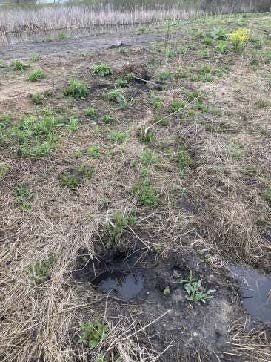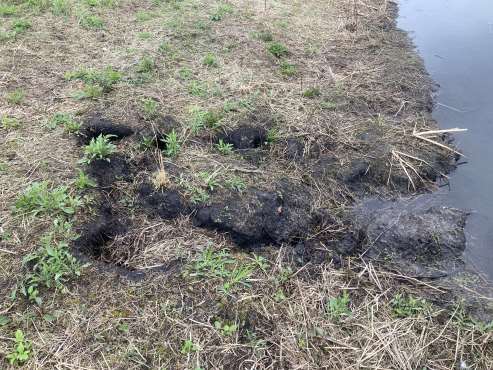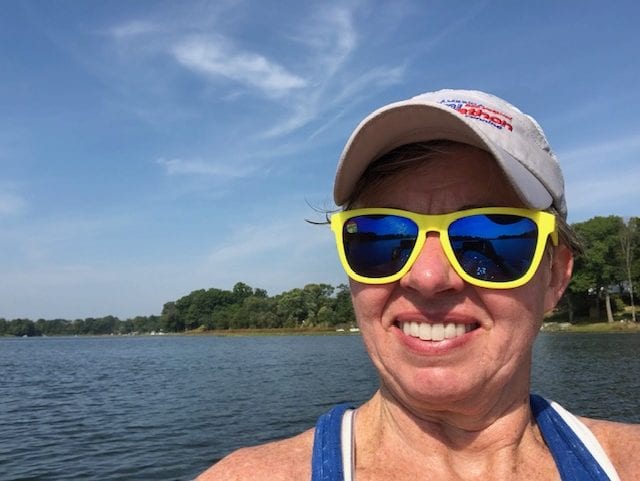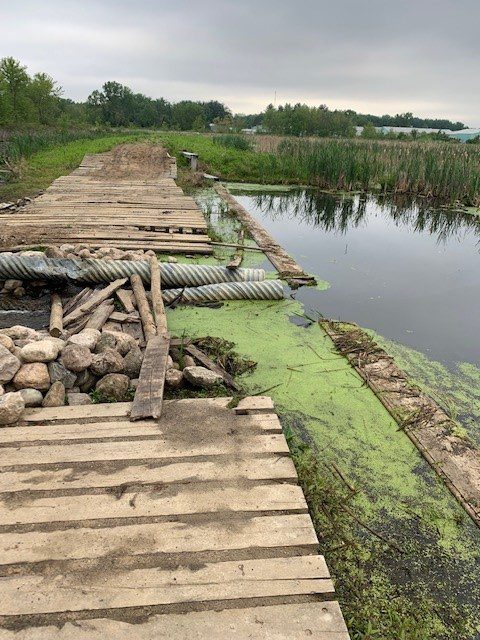If you have been by the Kline Levee this year, you may have been surprised to see it looking very messy and under construction again. Rest assured, this was planned, and all is well.
A Little Bit of History
The original project started in the fall of 2019. After about a month of construction, we ran into an issue where approximately 150′ of the levee did not have a solid bottom so the soil that was being added on top was just sinking. Work could not continue and a different solution had to be found. You can read more about it here:
Kline-Levee-Update.pdf (lakemax.org)
Kline Levee Final Updates (lakemax.org)
Phase II
We were advised that the “problem” area would continue to settle, rapidly at first and then it would slow down. At that point, more soil would be needed to make the levee level. We took measurements at regular intervals and after several months with no measurable change, we were ready to bring in additional fill. This is Phase II of the project. We were given a quote of $59,800 and secured a Lake and River Enhancement (LARE) grant in the amount of $46,400. Work began in January 2022 and is almost complete. The wet spring and higher than normal lake level has delayed the completion of the project but once conditions are right, it will only take a few days for final grading, seeding and clean up.
All is Well
I recently walked the levee with a representative from Cardno Native Plant Nursery to inspect the work that was done, both in 2020 and the recent 2022 work, to determine if it was functioning as designed. We were looking for:

- Woody vegetation to flag for treatment
- Damage to levee slopes or top from burrowing animals or water (holes or erosion)
- Principal spillway stop logs in place at designated elevation, locking mechanism secure
- Any damage to the exposed portion of the vinyl sheeting or cap on the spillway
- Any erosion adjacent at principal spillway or downstream side of the entire spillway
- Any exposed animal guard fencing in levee
- Tree survival inspections

Good Inspection Report
We saw several instances of muskrats attempting to burrow into the levee, but the animal barrier that was part of the design was only allowing for surface burrowing. We were encouraged to see the native plants plugs, which included many pollinator species, that were installed along the slopes of the levee were surviving and did not see an abundance of invasive plant species.
Overall, the levee is performing exactly as designed. Hopefully conditions will soon be conducive to finishing the project.
LMEF will continue to monitor the levee and work closely with private contractors and Indiana DNR on maintenance and any future repairs. Feel free to contact the LMEF office if you have any questions.
“There is immense power when a group of people with similar interests gets together to work toward the same goals.”
― Idowu Koyenikan

Hi, I’m Debbie Palmer. I received a BS in Horticulture from Purdue University. Here at LMEF, I am responsible for outreach presentations, monitoring the lake and it’s wetlands, project manager for restoration and research projects, and act as a community resource for all things related to the well-being of Lake Maxinkuckee and its surrounding watershed. I completed Indiana Watershed Leadership Academy, volunteer with the Indiana Clean Lakes Program, Hoosier River Watch and Marshall County Lakes and Waters and serve as a Board Member for Indiana Lakes Management Society.


Recent Comments